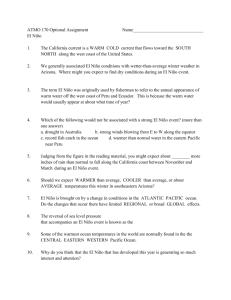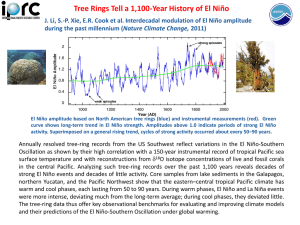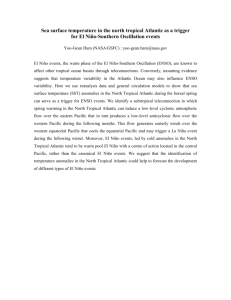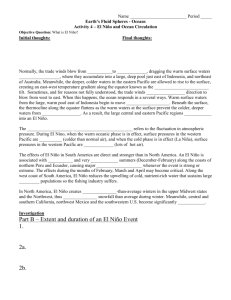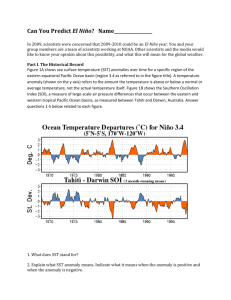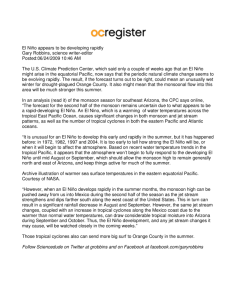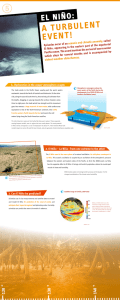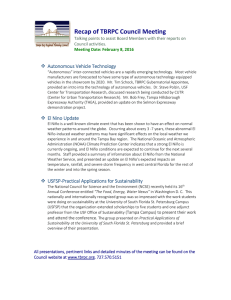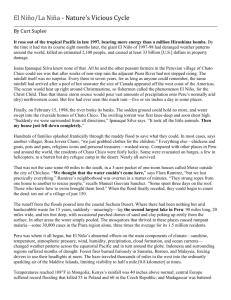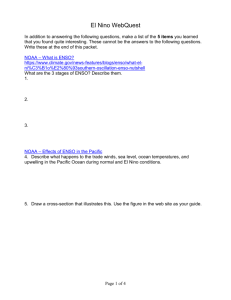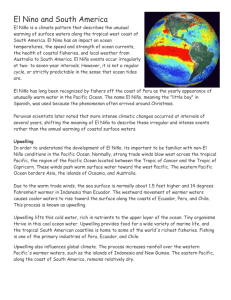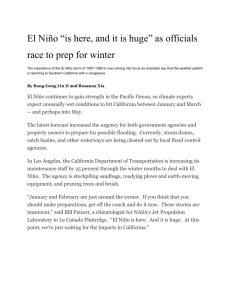El Nino Worksheet
advertisement
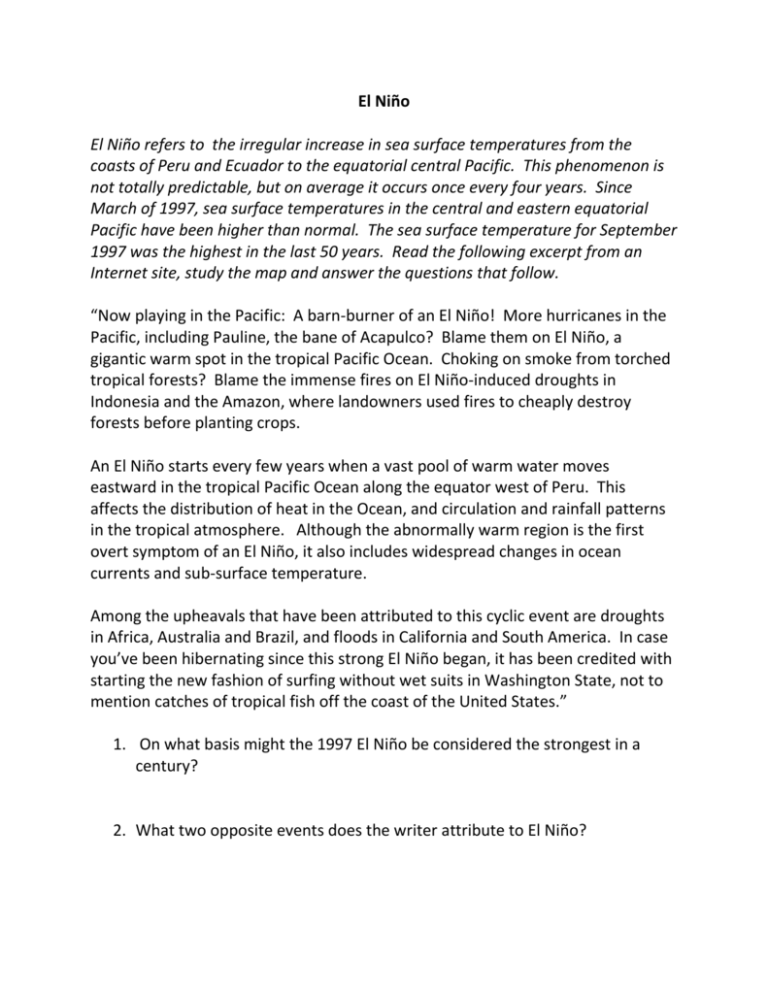
El Niño El Niño refers to the irregular increase in sea surface temperatures from the coasts of Peru and Ecuador to the equatorial central Pacific. This phenomenon is not totally predictable, but on average it occurs once every four years. Since March of 1997, sea surface temperatures in the central and eastern equatorial Pacific have been higher than normal. The sea surface temperature for September 1997 was the highest in the last 50 years. Read the following excerpt from an Internet site, study the map and answer the questions that follow. “Now playing in the Pacific: A barn-burner of an El Niño! More hurricanes in the Pacific, including Pauline, the bane of Acapulco? Blame them on El Niño, a gigantic warm spot in the tropical Pacific Ocean. Choking on smoke from torched tropical forests? Blame the immense fires on El Niño-induced droughts in Indonesia and the Amazon, where landowners used fires to cheaply destroy forests before planting crops. An El Niño starts every few years when a vast pool of warm water moves eastward in the tropical Pacific Ocean along the equator west of Peru. This affects the distribution of heat in the Ocean, and circulation and rainfall patterns in the tropical atmosphere. Although the abnormally warm region is the first overt symptom of an El Niño, it also includes widespread changes in ocean currents and sub-surface temperature. Among the upheavals that have been attributed to this cyclic event are droughts in Africa, Australia and Brazil, and floods in California and South America. In case you’ve been hibernating since this strong El Niño began, it has been credited with starting the new fashion of surfing without wet suits in Washington State, not to mention catches of tropical fish off the coast of the United States.” 1. On what basis might the 1997 El Niño be considered the strongest in a century? 2. What two opposite events does the writer attribute to El Niño? 3. How does an El Niño start? 4. Using the Internet, describe the La Niña phenomenon. 5. Approximately where on Earth is the warm water congregating? Look at a world map and identify the degree of latitude. 6. Which of the continents are shown on the map above? Compare the differences in direction of each of the three variables labeled on the map.
